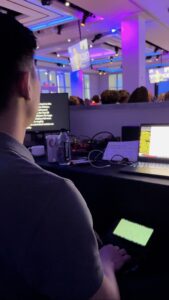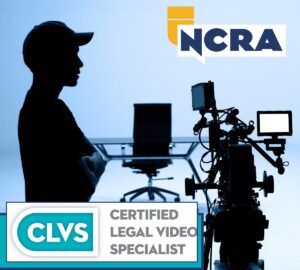By Diana Netherton
The duties of a court reporter, often referred to as a stenographer, have essentially remained the same for the past 100 years. The primary task of a court reporter is to capture the spoken word.
Technology, of course, has made the job of a court reporter much easier. From feather quills to computers, the evolution of the profession has been quite remarkable. Before the invention of an official shorthand, court proceedings were taken down in full writing. Of course, getting everything accurately was probably a stretch, but a basic summation of what occurred was recorded. The proceedings were then put into some form of a legible document, today referred to as a transcript, which could later be reviewed by the attorneys and judges for appeal purposes.
In the early 19th century, an American by the name of Isaac Pitman invented a phonetic shorthand theory that enabled stenographers to record proceedings at quicker speeds. This theory of shorthand was adopted by pen writers throughout the English-speaking world. Pitman then produced a varied number of new “editions” of his theory. However, some of his modifications did not bode well with the international shorthand community. One of the major changes was the placement of dot vowels. He reversed the order of the dot vowels and published his new theory in his following edition.
This slight modification rattled a few foundations throughout the steno community. After spending months, even years, crafting their skills with the original version, writers were faced with having to adopt these basic changes if they wanted to keep up with progressing trends. The British, in traditional stiff upper lip fashion, accepted the changes, stating that the modification would be the last they would accept. The Americans, however, in true rebellious fashion, were less accommodating. Some adopted the new theory, however, others produced their separate shorthand versions, keeping the vowels were they originally were. This resulted in several different versions, although not too dissimilar to the original version.
Fractions of these shorthand theories were used for many years until the arrival of a young, ambitious Irish immigrant called John Gregg. Often referred to as the “Apple MacIntosh of the 19th Century,” a new version of shorthand that Gregg created had many more appealing factors. Still phonetic in nature, Gregg’s shorthand proved to be more efficient than Pitman. It allowed the stenographer to keep the pen on the surface of the paper, so hand movements flowed easier. Pitman’s version had both thick and thin lines, whereas Gregg’s version depended on lighter strokes. Although both versions were utilized, in the end it was Gregg’s creation that won the popular vote. Gregg still remains the most popular version of pen shorthand to this day in North America.
Despite these advances in efficient notetaking, the pace technology quickly caught up with stenographers at the dawn of the 20th Century with the invention of the first functional stenotype machine. Created in 1877 by an American named Miles Bartholomew, this remarkable machine, comprising only ten keys, enabled the user to utilize the keys depressed singularly or simultaneously to capture the spoken word with a combination of dots and dashes. There were various improvements to this original prototype over the ensuing years. The modern steno machine keyboard that most resembles the keyboard utilized today by stenographers made its debut a few decades later in 1939. Still based on the use of phonetics, the machine enabled the operator to create “briefs,” allowing for entire phrases to be taken down at once. Extra keys were added, to a total of 26, and letters were assigned to each key or a combination thereof. A typical brief, for example, is the phrase beyond a reasonable doubt. These four words can be written simultaneously, and would look like this on a typical stenotype machine: “kwr a eu r d.” All it took to record this simple phrase was one stroke; all relevant keys being depressed at once. This was transferred to a roll of paper, similar in appearance to a grocery store bill, which was then typed up by the stenographer or a note reader, who could decipher these mysterious combination of letters.
The demise of Pitman/Gregg shorthand pen writers in the court systems began in much earlier, however, in 1914 at a national shorthand speed competition. Hundreds of hopeful pen writers crowded the convention, when in walked a group of teenage competitors. Sponsored by the Universal Stenotype Company, these upstart youths were trained to operate steno machines at equal or in excess speeds of the most seasoned of pen writers. These machine writers managed to win every contest and walked off with all of the awards. Alarmed at this new technological development, and fearing for their very livelihood, contest organizers pulled the plug on the national competition for five years. However, by the time the next national competition returned in 1919, the point had been made. Even though machine writers were banned from the competition, it was too late. Machine writers had already begun to replace pen writers in court rooms across America.
Today there are thousands of court reporters employed in various aspects of the profession. Increasing computer technology has enabled court reporters to be useful in other areas besides the courtroom. One of these areas is called CART, or Communication Access Realtime Translation. This enables the end user to read almost simultaneously what is being spoken on a computer or television screen. Specialized software is programmed to translate the reporter’s machine strokes, turning the seemingly unintelligible mass of letters into a comprehensible language. This is particularly helpful for the hearing impaired, who use the services of court reporters to follow live proceedings such as the news, government hearings, sporting events, and even in university settings.
Because of these rapid technological advances over the past 100 years, the future of the court reporting has remained a pertinent concern for those in the profession. There has always been speculation of what new invention could completely take over the duties of a court reporter. Budget cuts, lack of funding, and the economy have all played a part in the reduction of reporters and many government entities are implementing the use of electronic recording device systems. However, headways in technology have also assisted the profession. The widest area of changing direction is in the captioning field. Several captioning services are finding that there are more captioning hours to fill than trained stenographic captioners.
Despite the shifting trends that have affected the reporting profession, there is one fact that cannot be disputed, and that is the accuracy of having a live reporter at a proceeding. In the words of Vykki Morgan, RDR, CRI, CPE (Ret.), a court reporting instructor at Cerritos College in California: “Costs and technology can’t completely wipe out a reporter’s work duties as long as an accurate record is treasured and regarded as essential.” And because the profession of reporting has evolved and grown with the modern innovation, it is almost certain that reporters will be utilized and will remain essential for an accurate record for hopefully another 100 years or more.
Diana Netherton, RPR, is an official reporter based in Lancaster, Pa. She can be reached at NethertD@co.lancaster.pa.us.





